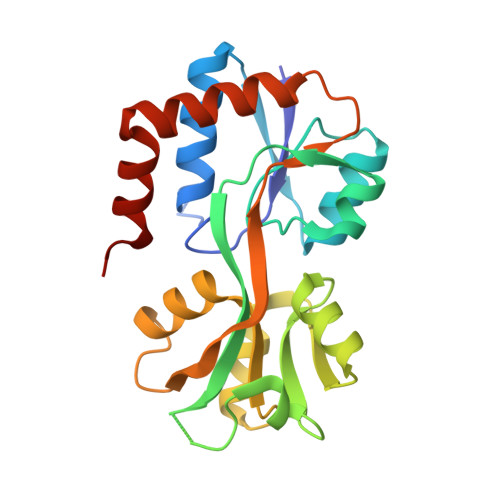Crystal structure of the GluR0 ligand-binding core from Nostoc punctiforme in complex with L-glutamate: structural dissection of the ligand interaction and subunit interface.
Lee, J.H., Kang, G.B., Lim, H.H., Jin, K.S., Kim, S.H., Ree, M., Park, C.S., Kim, S.J., Eom, S.H.(2008) J Mol Biol 376: 308-316
- PubMed: 18164033
- DOI: https://doi.org/10.1016/j.jmb.2007.10.081
- Primary Citation of Related Structures:
2PYY - PubMed Abstract:
GluR0 from Nostoc punctiforme (NpGluR0) is a bacterial homologue of the ionotropic glutamate receptor (iGluR). We have solved the crystal structure of the ligand-binding core of NpGluR0 in complex with l-glutamate at a resolution of 2.1 A. The structure exhibits a noncanonical ligand interaction and two distinct subunit interfaces. The side-chain guanidium group of Arg80 forms a salt bridge with the gamma-carboxyl group of bound L-glutamate: in GluR0 from Synechocystis (SGluR0) and other iGluRs, the equivalent residues are Asn or Thr, which cannot form a similar interaction. We suggest that the local positively charged environment and the steric constraint created by Arg80 mediate the selectivity of L-glutamate binding by preventing the binding of positively charged and hydrophobic amino acids. In addition, the NpGluR0 ligand-binding core forms a new subunit interface in which the two protomers are arranged differently than the known iGluR and SGluR0 dimer interfaces. The significance of there being two different dimer interfaces was investigated using analytical ultracentrifugation analysis.
Organizational Affiliation:
Department of Life Science, Cell Dynamics Research Center, Gwangju Institute of Science and Technology (GIST), Gwangju 500-712, Republic of Korea.















